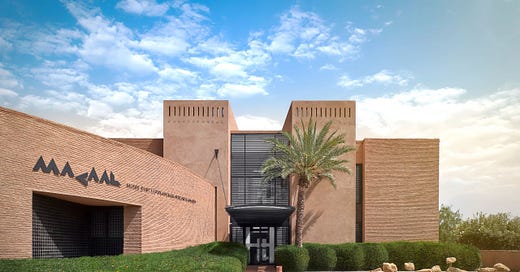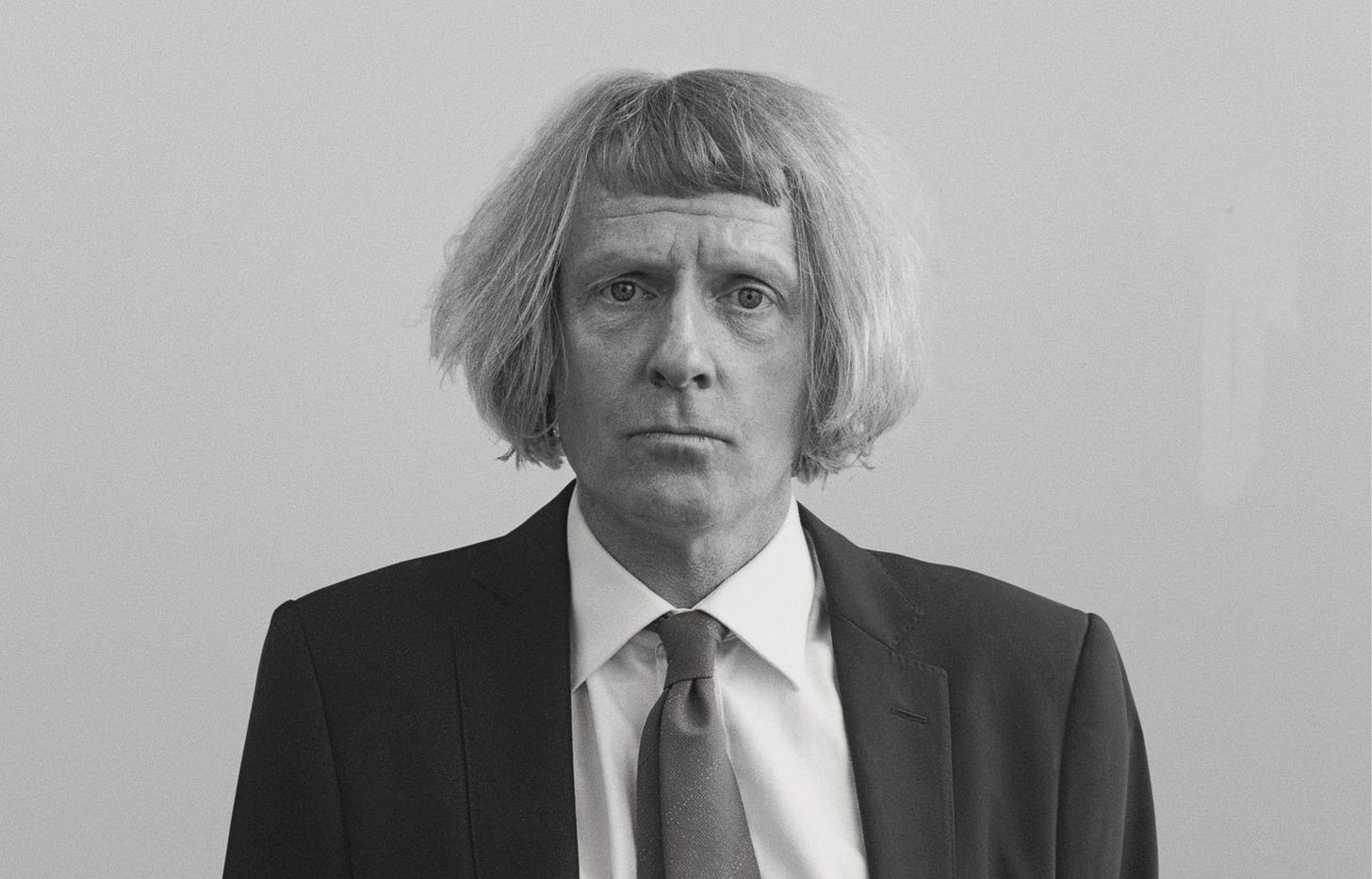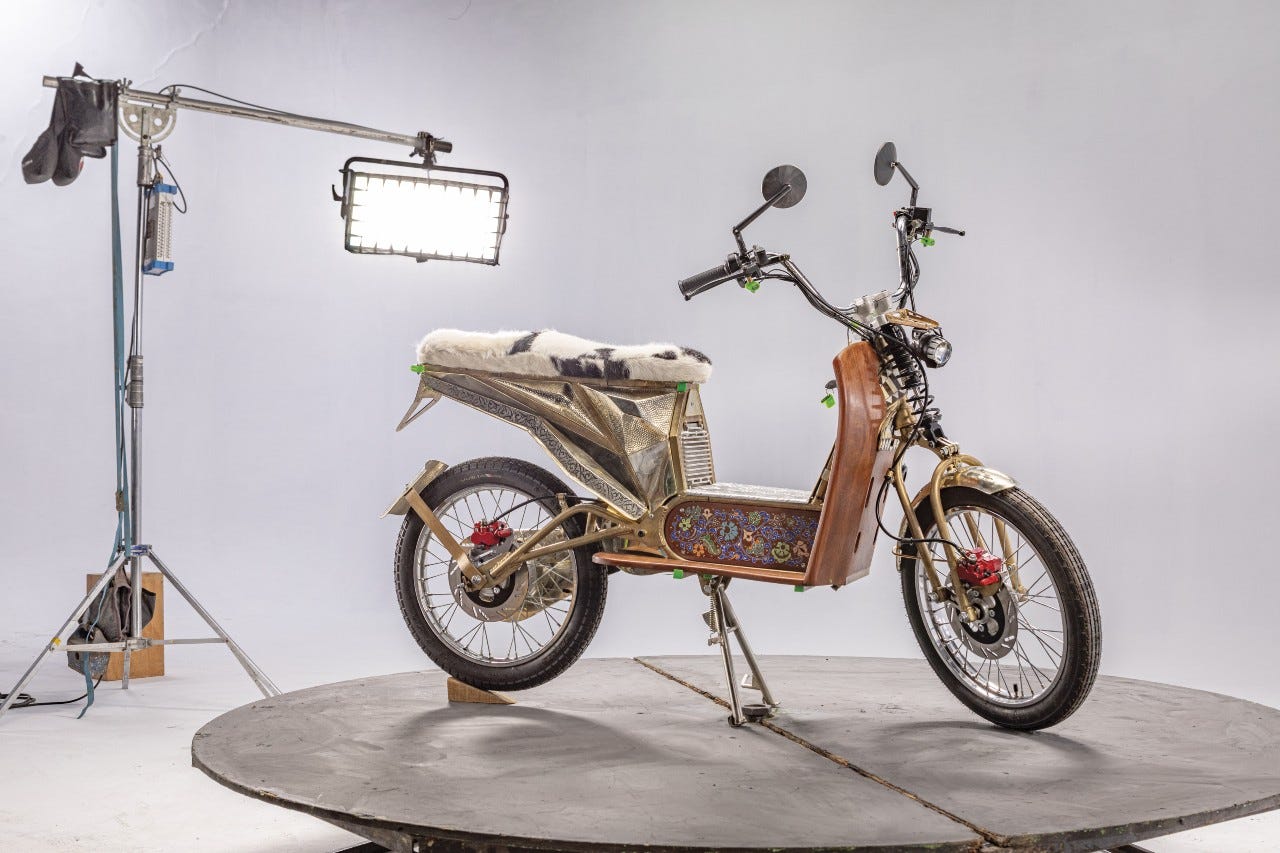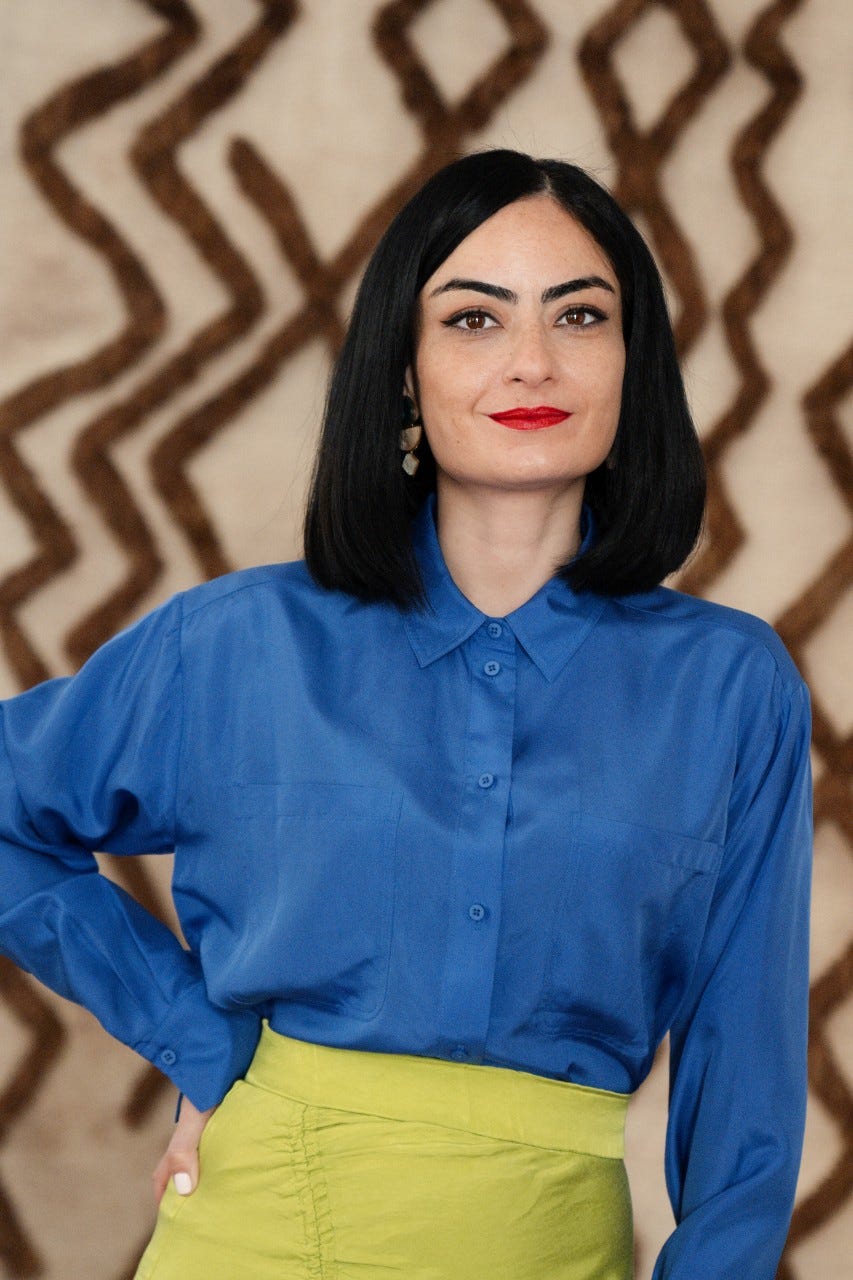Wednesday 15 January 2025 | views from the world of museums, galleries, heritage and art
Hello.
It’s the first mid-week edition of the year! (If you missed the first Friday news round-up which landed last week, you can catch up here).
For my first Big Interview of 2025, I get the lowdown on a major project opening to the public this year — and one of the most significant contemporary art developments in Africa in recent years.
Staying ‘looking ahead,’ in the Hot List, five leading figures from the art and museum world tell me (and you) the exhibitions and art events they are most excited about in the coming 12 months.
And in the 250 Take, Helen Rosslyn, Director of London Original Print Fair, explains how their annual Hallett Independent Acquisitions Award is helping forge bonds between museums and the art market.
Let’s dive right in!
— maxwell
— I may earn a small commission from purchases made through these links
Get ready for Grayson
One of the exhibitions I am most looking forward to in 2025 is Grayson Perry’s takeover of the Wallace Collection in London. It’ll double as a birthday celebration too, as it opens on the very day Sir Grayson turns 65.
The Wallace Director promises the show will “surprise and intrigue.” So now feels like it’s a great time to gen-up on the artist, which is why I’ve picked the three best Grayson Perry books to dive deeper into his art and mind:
📙 Portrait Of The Artist As A Young Girl — a raw, funny, and deeply honest journey from a turbulent Essex childhood to discovering art, identity, and self-acceptance. [Buy]
📗 Smash Hits — with 75 vibrant works and exclusive insights, this stunning book celebrated Perry’s biggest ever UK exhibition at the National in Edinburgh in 2023. [Buy]
📘 Playing to the Gallery — a witty manifesto that demystifies contemporary art with humour and insight. [Buy]
The Hot List
For the first Hot List of 2025, five leading names in art and museums reveal the exhibitions and openings they are most looking forward to in the year ahead.
🗣 Luke Syson, Director and Marlay Curator of the Fitzwilliam Museum
✨ Undersea | at Hastings Contemporary
“This exhibition will take us — appropriately given its seaside setting — under water to where we rarely see but often imagine, linking pictures by the likes of Michael Armitage to historic pieces from across time and place — from Edwardian illustrator Arthur Rackham to surrealist Paul Delvaux to unknown Australian Aboriginal and Torres Straits Islander artists.” Opens 29 March. Find out more
— Rise Up: Resistance, Revolution, Abolition — exploring the the fight to end transatlantic slavery — opens at the Fitzwilliam Museum in Cambridge on 21 February
🗣 Jonathan Badyal, Deputy Chair of the Black Country Living Museum, and Director of Communications at Universal Music UK
✨ Chila Welcomes You | at IWM North
“I first got introduced to Chila Burman last year by Frances Morris (then Tate Modern Director). She said we must meet so I visited her studio and entered the kaleidoscopic world of Chila! She has lots coming up next year but I’m particularly excited for her major new art commission for IWM North, which looks at stories of Indian migration to Britain post WWII.” Opens 30 January. Find out more
— The Black Country Living Museum’s Woodside Library — rebuilt brick-by-brick — will open in the spring.
🗣 Dr Sam Lackey, Director of Liverpool Biennial
✨ Linder: Danger Came Smiling | at the Hayward Gallery, London
“Linder was one of our Liverpool Biennial artists in 2021 and she moves with grace and intense energy through her multiple preoccupations including collage, music, fashion, sculpture, pornography, dance, feminism and performance. I love how she deftly shifts between various cultural touch-points and is as at home referencing Cilla Black as Barbara Hepworth.” Opens 11 February. Discover more
— The 13th Liverpool Biennial — titled BEDROCK — will open on 07 June 2025
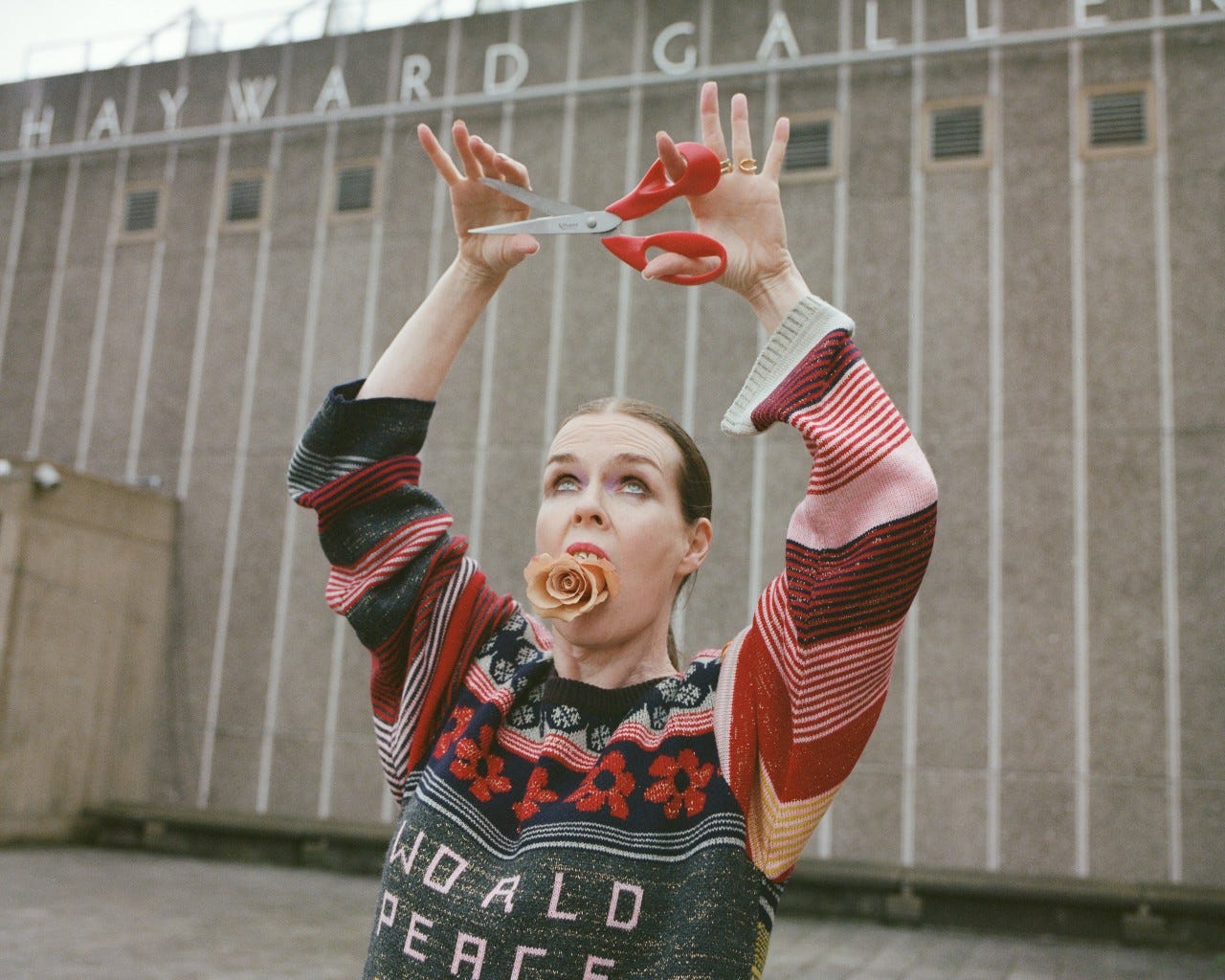
🗣 Caroline Campbell, Director of the National Gallery of Ireland
✨ C C Land: The Wonder of Art | at the National Gallery, London
“I’m eagerly anticipating the redisplay of London’s National Gallery in the late spring of 2025. This is one of the world’s most perfect art collections. I cannot wait to see what a new generation of curators do with it. I’m looking forward to thinking anew about paintings that I love, and seeing them afresh.” Opens 10 May. Learn more
— Turner’s Watercolours: Scotland’s Vaughan Bequest runs at the National Gallery of Ireland in Dublin until 31 January. A major exhibition on Picasso and his studio opens on 11 October.
🗣 Pedro Alonzo, Artistic Director of the 2025 Boston Public Art Triennial
✨ Bukhara Biennial 2025 | in Bukhara, Uzbekistan
“Surprise was followed by excitement when the artist Delcy Morelos mentioned that she was participating in a biennial in Uzbekistan, a country I have always wanted to visit. I am eager to attend the Bukhara Biennial to see how contemporary artists respond to the singular culture and legendary architecture.” Opens 05 September. Find out more
— The inaugural Boston Public Art Triennial — showcasing 15 new outdoor public art commissions across the city — opens on 22 May
The 250 Take
Today’s 250-word opinion column by a guest writer sees Helen Rosslyn, Director of London Original Print Fair (LOPF), call for museums to work closer with the art market to help their collections grow.
💬 Here’s how the art market can help museums in austere times
“We launched an annual award in 2016 to give UK art institutions an opportunity to acquire original prints for their collections. However, our broader aim is to build stronger relationships between museums and the art market.
Museums do a vital job in making the arts accessible to a wide audience, but collections need to grow and evolve to stay relevant. Funding for exhibition programmes must be matched by funding for acquisitions. Art fairs and dealers have an important role to play here and these partnerships could be better developed and more widely utilised.
Curators work tirelessly to care for our nation’s art collections, but their hands are often tied through lack of purchasing power when it comes to buying. Original prints can offer a practical and affordable way for museums to bring key artists into public collections without stretching limited resources.
In addition to the Award itself, we offer a night in a hotel for four short-listed curators, enabling them to visit LOPF and meet artists, dealers and fellow curators. Many fruitful relationships have been forged this way — artists lend or donate to museums; dealers sponsor projects; and curators are invited to speak at major events, giving a voice to smaller museums.
We hope that this award will encourage museums to recognise the value of engaging with the art market, and for dealers and publishers to respond by supporting art institutions however they can. Together we can ensure that our national collections remain vibrant and relevant for generations to come.”
— Applications for the 2025 Hallett Independent Acquisitions Award are now open. The wining applicant will receive a sum of £8,000 to spend at the London Original Print Fair for their collection. The Fair runs from 20 to 23 March at Somerset House.
The Big Interview
One of the most trailblazing museum developments planned for 2025 will be opening in the Moroccan city of Marrakech next month.
The fourth-largest city in the country is quickly establishing itself as a leading art destination in Africa. In fact, in just a few days time, the 1-54 Contemporary African Art Fair will return for its second hosting in the city — the Fair’s only international edition to actually take place on the continent.
Yet a major reason for Marrakech’s growing art status began with the opening of the Museum of African Contemporary Art Al Maaden (MACAAL) in 2016. It’s an independent, not-for-profit institution, and was one of the first of its kind in Africa. Since opening, it’s only grown in status.
But to mark its next chapter, it’s just undergone extensive renovations and expansion. Next month it reopens to the public once more, having evolved to include annual site-specific installations, a new media library, and perhaps most importantly, its first ever dedicated permanent gallery showcasing the museum’s world-leading collection.
To mark the reopening, today’s interview is with the Artistic Director of MACAAL, Meriem Berrada.
Meriem has been with the museum since it opened, and her commitment to leading innovative cultural projects saw her featured in Apollo art magazine's 40 Under 40 influential art world figures in 2020.
Here — in the first Big Interview of the year — we discuss all the details of the reopening plans, how the art scene in Africa has changed, and her personal highlights of what visitors can expect.
***
Hi Meriem. So first question, how are preparations for the opening going?
The preparations are going wonderfully — it’s such an exciting time!
Seeing an idea, a concept, or a reflection take shape through collective effort is always a thrilling experience. Personally, I particularly enjoy the energy that installations bring. While the preparatory work defines the exhibition’s overall flow, we like to leave room for the magic of the final setup to happen. New ideas often emerge during this stage, sparked by exchanges within the team, and there are these incredible moments of serendipity when unexpected, yet perfectly harmonious, connections form between the artworks.
Just how important is MACAAL's art collection — and why is a permanent gallery displaying it only coming now?
It’s an extraordinary collection that really encapsulates the breadth and diversity of African art over the last century. It began over 40 years ago with Alami and Farida Lazraq, who initially collected works by pioneering Moroccan artists.
Over the decades, the collection expanded to comprise over 2,000 works from Africa and its diaspora, featuring a countless range of artists, mediums, countries and time periods. It’s become an incredibly rich reflection of the creative innovation, cultural heritage and socio-political changes seen across the continent — and we wanted to share these fascinating stories and artworks with our visitors.
Since we launched in 2016, our objective at MACAAL has always been to offer an accessible and educational platform to audiences — so to launch a permanent space, and turn this once-private family collection into a public resource, felt like a natural next step in our evolution. Moreover, there are many notable institutions around the world where you can go to see African art collections, but not so many based on the continent itself — we want to change that!
What are some of your personal highlights in the inaugural permanent exhibition Seven Contours, One Collection?
Ah, there are so many highlights! First, it’s always incredibly valuable to have an external perspective on something you think you know well. The work we’ve done with Zamân Books and Curating, the spatial design by Franck Houndegla, and the vision of the Museum President Othman Lazraq, rooted in his family collection, have allowed us to reframe the artworks, create new connections, and continuously enrich our reflections.
If I were to choose personal highlights, I would start with the section Decolonize, which sets the tone for the entire exhibition. This space invites a profound reflection on how colonisation generated stereotypes of Africa and its people. What makes this section particularly striking is the direct confrontation with various characters who gaze back at us, questioning the perspectives we have held —or continue to hold —about them.
A powerful example is the juxtaposition of a reductive, exoticised female portrait by Majorelle with Ayana Jackson’s work, which actively reimagines and reclaims historical narratives. Jackson’s self-staged portraits challenge colonial-era imagery by placing herself in the frame, confronting the viewer, and reclaiming ownership of representation. This dialogue between the works not only critiques the colonial gaze but also reclaims the dignity and complexity of the subjects, urging us to reconsider our relationship with these enduring legacies. This narrative is beautifully contextualised by the writing of Ariella Azoulay, whose scholarship sharpens our understanding of these dynamics.
Another deeply moving moment for me is the symbolic and chromatic dialogue between Moroccan modernist pioneers like Ahmed Cherkaoui and Jilali Gharbaoui and contemporary voices like Sara Ouhaddou. Ouhaddou deconstructs and reimagines artistic traditions, forging connections between past and present while questioning the very fabric of cultural heritage. This dialogue transcends time, offering a rich and layered experience of Moroccan art’s evolution.
You're introducing two new site-specific installations each year too. Why?
This is an exciting new development to the museum’s artistic programme. We truly see MACAAL as a living, breathing platform for contemporary African art — a space that exists in the ‘now’.
This new initiative provides an opportunity for artists to create and exhibit ambitious works that engages with the incredible museum space itself. These large-scale installations by Salima Naji and Aïcha Snoussi will offer contemporary reflections on the continent’s art scene today; they will be developed in dialogue with the permanent exhibition, and echo the outdoor sculptures in the museum’s garden. It’s also a way of us supporting contemporary artistic talent and creating dynamic experiences for new and repeat visitors.
When MACAAL opened in 2016, it was one of only a few contemporary art galleries on the continent. Has that changed?
The arts scene on the continent has changed massively. In 2016, we were one of the few institutions on the continent; while that is still true to an extent, there has been a proliferation of galleries, arts spaces and African art fairs, many of them in Marrakech itself. I think it is fair to say that the museum has played a part in inspiring this momentum, in celebrating the art of the continent.
From the outset, we envisioned MACAAL as a gateway to Africa’s arts scene, not just for international visitors but also for local audiences who were previously unfamiliar with it. Through extensive community engagement projects and initiatives, I think MACAAL has also played an important role in shifting perceptions of art and cultivating local audiences, which has in some ways paved the way for the changes we see today.
Also, I would add that while institutions like ours are crucial, we must not overlook the incredible work being done by third spaces, which play a fundamental role in supporting the arts at the grassroots level. Places like Le 18 and Dar Bellarj in Marrakech, or 32° East in Kampala, to name just a few, are doing remarkable, transformative work. These spaces contribute significantly to nurturing reflection, fostering dialogue, and building sustainable ecosystems for the arts on the continent.
In 2020 you set up a bootcamp to train emerging arts leaders in Africa. What makes a good arts leader?
I would say that a good arts leader, first and foremost, needs to demonstrate exceptional agility. While this is a key trait for professionals in the cultural sector worldwide, it is especially vital in our region, where navigating gaps in resources —both human and material — requires creativity and endurance, all while responding to the urgency of artistic expression.
Equally important are curiosity and a genuine capacity to listen to artists, along with fostering meaningful dialogue with peers. Understanding the deeper purpose behind our work — what motivates us and how we can effectively build meaning with the artists and communities we collaborate with — is essential to creating impactful and sustainable change.
Finally, how many visitors do you hope to have welcomed after one year of opening?
Honestly, I don’t believe that success can truly be measured in numbers — at least not in our field or within our specific context. For me, what matters most is what we build together: the meaning we create, how we transform individual journeys, and the way we nurture critical reflections.
The real question isn’t about how many visitors we welcome but about how we can bring in new audiences and make the museum a space that resonates with them. It’s not quantitative; it’s about fostering a lasting impact. Success is when someone walks out of the museum with a new perspective, a sense of connection, or inspiration to think differently. Those are the outcomes that endure, far beyond any attendance figures.
The Museum of African Contemporary Art Al Maaden reopens with its new permanent collection gallery Seven Contours, One Collection on 02 February 2025.
Enjoyed this newsletter? It took many hours to put together. Donate now to support me as I continue to bring you insights from the world of museums, galleries, art and heritage.

